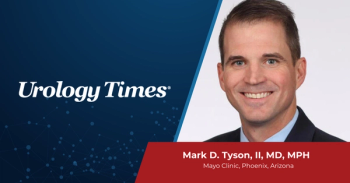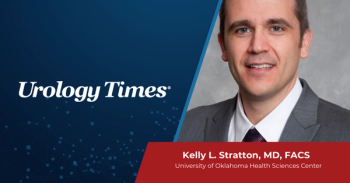
Dr. Geynisman on OS estimates with adjuvant nivolumab in bladder cancer
“We wanted to do a modeling analysis using patient-level data to see if we can estimate whether or not there is a long-term cure or overall survival benefit for these patients,” says Daniel M. Geynisman, MD.
In this video, Daniel M. Geynisman, MD, discusses the background and key findings from the study, “Estimating the impact of adjuvant treatment with nivolumab on long-term survivorship rates compared with surveillance: Analyses of disease-free survival (DFS) from the phase 3 CheckMate-274 trial,” which was presented at the 2024 ASCO Genitourinary Cancers Symposium in San Francisco, California. Geynisman is a genitourinary medical oncologist at Fox Chase Cancer Center in Philadelphia, Pennsylvania.
Video Transcript:
Could you describe the background for this study?
Patients with bladder cancer who are at high risk of recurrence after surgery are eligible to receive adjuvant nivolumab to delay any disease recurrence. The primary end point was this disease-free survival, but a very important end point for all of us in the community is overall survival. In other words, does adjuvant therapy improve overall survival, which is ultimately the most important factor for patients. That data is really not available in CheckMate-274. It is an event driven end point that has not been reported yet. So, we wanted to do a modeling analysis using patient-level data to see if we can estimate whether or not there is a long-term cure or overall survival benefit for these patients.
What were the key findings from this study?
What we really showed is that if you use a particular modeling method that looks at background mortality rates of healthy individuals and disease-free survival for patients on the trial, and then if you combine that data and you extrapolate over many years, it appears that adjuvant nivolumab leads to a statistically and clinically meaningful cure rate and overall survival benefit. It does so for the entire population in the intent-to-treat population, as well as for the PD-L1 positive population where that benefit is even more pronounced, somewhere in the order of 69% for the intent-to-treat population, and over 20% absolute benefit for the PD-L1 positive population. It's important to note that this is non-randomized, prospective overall survival data. This is modeling based on the DFS end point. There's a lot of assumptions that go into it, and if you change those assumptions, you certainly may get different results. But given that we don't have an overall survival end point in this trial yet, and the one for adjuvant pembrolizumab as we also saw at GU ASCO was immature, this is another piece of evidence that I think you can use in clinic when thinking about whether or not to offer adjuvant nivolumab to your patient and discussing it with them.
This transcription has been edited for clarity.
Newsletter
Stay current with the latest urology news and practice-changing insights — sign up now for the essential updates every urologist needs.


















